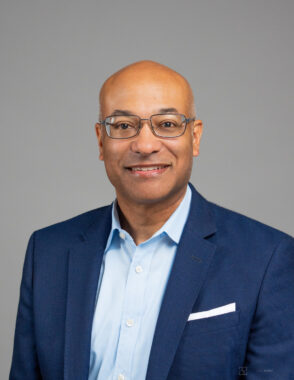Casgevy scientist: Approval of gene therapy ‘transformative’ in SCD
Casgevy approval gives sickle cell patients treatment options for 1st time

New regulatory decisions in the U.S. and the U.K. have made Casgevy (exagamglogene autotemcel) the first gene-editing therapy to be approved for adults and adolescents with sickle cell disease (SCD) who experience painful vaso-occlusive crises (VOCs).
With these recent approvals, the therapy from Vertex Pharmaceuticals and CRISPR Therapeutics also became the first and only approved treatment for any human genetic disease worldwide that employs the Nobel Prize-winning CRISPR-Cas9 gene-editing technology.
“In a word, it’s transformative,” William Hobbs, MD, PhD, vice president of clinical development for hemoglobinopathies at Vertex, said in an interview with Sickle Cell Disease News.
“This is a really historic moment for science and medicine. … I think the significance that this is occurring in patients with sickle cell disease can’t really be underappreciated, given how difficult it has been for sickle cell patients to get attention, to get equitable access to care, and to have viable treatment options that really change and alter the course of their disease,” Hobbs said.
In the U.K., Casgevy now is conditionally approved for SCD patients, ages 12 and older, as well as those with transfusion-dependent beta thalassemia (TDT), a related blood condition. The new U.S. clearance covers SCD patients 12 and older, with a regulatory decision for TDT expected next year. Similar applications are under review in the European Union and in Saudi Arabia.
Price for one-time gene-editing therapy set at $2.2 million
An exact date when Casgevy will become commercially available in the U.S. hasn’t been announced, but Hobbs emphasized that Vertex is “committed to making this [therapy] available to patients as soon as possible.”
The Casgevy treatment process, which can take several months, must be conducted at a specialized treatment center with experience in stem cell transplants. According to Hobbs, “there are already authorized treatment centers that are lined up and ready to go.”
“We’re absolutely committed to getting this to [individuals with sickle cell disease] as quickly as possible, because we know that patients are waiting,” Hobbs said.

William Hobbs, MD, PhD, is the vice president of clinical development for hemoglobinopathies at Vertex Pharmaceuticals. (Photo courtesy of Vertex.)
The list price for the one-time gene therapy is set at $2.2 million. Meanwhile, Lyfgenia (lovotibeglogene autotemcel), another gene therapy that was approved for SCD in the U.S. on the same day as Casgevy, is listed at $3.1 million — a price “tied to value,” per a presentation from its developer, Bluebird Bio.
Patients eligible for Casgevy can enroll in Vertex Connects, a patient support program that will assign individuals a care manager to assist them in their treatment journey and guide them on available resources.
A hallmark of SCD is vaso-occlusive crises, known as VOCs — a type of pain crisis that arises when oxygen transport to certain parts of the body is compromised due to blood vessel blockage.
In sickle cell disease, genetic mutations result in the production of a faulty version of hemoglobin, which is the protein in red blood cells responsible for oxygen transport. This defective form of hemoglobin causes red blood cells to take on an abnormal sickle-like shape that makes them prone to clumping up and blocking blood vessels.
VOCs are considered a medical emergency, requiring a visit to a healthcare facility.
A major problem for patients, the scientist said, is that “vaso-occlusive crises … occur with … unforeseen frequency, meaning that they’re unpredictable.”
“They disrupt people’s lives,” Hobbs said.
Moreover, each VOC causes tissue damage, which accrues over time, potentially leading to organ failure.
“For a sickle cell patient who’s living with this, they know that their body is slowly being destroyed bit by bit by bit every time they have one of these pain crises,” Hobbs said. “There’s an enormous burden that’s attached to that for patients and their families.”
SCD patients given Casgevy free of VOCs for nearly 2 years to date
Formerly known as exa-cel, Casgevy works to prevent VOCs by enabling red blood cells to produce fetal hemoglobin — a form of hemoglobin that’s normally produced during fetal development but is turned off sometime after birth. This is important because fetal hemoglobin is not affected by SCD-causing mutations.
A patient’s own blood cell precursors, called hematopoietic stem cells (HSCs), are collected and edited in the lab to reduce the activity of a gene that normally stops fetal hemoglobin production after birth. When the edited cells are returned to the patient via a stem cell transplant, they can then repopulate the body with healthy hemoglobin-producing cells, thereby preventing red blood cell sickling.
The most recent findings from the CLIMB-121 clinical trial (NCT03745287), which is still ongoing, backed Casgevy’s approval. These findings, presented at a recent conference, indicated that among 30 Casgevy-treated SCD patients, ages 12-35, all but one were entirely free of severe VOCs for at least 12 consecutive months.
Those results met the trial’s main goal in a clinically meaningful and statistically significant manner, according to researchers.
These patients were free of VOCs for a mean of 22.4 months, or almost two years, and up to nearly four years after dosing. All 30 patients were free from inpatient hospitalizations due to severe VOCs for at least one year.
According to Hobbs, freedom from these “life-disrupting” crises — and the stigma that comes with them — “means a lot to patients and families.”
“It allows them to go back to leading the lives that they would choose to live,” he said.
Another poster presentation at that conference detailed the quality of life benefits Casgevy had for patients participating in the clinical trial.
[Casgevy] gives [SCD patients] the ability to not have to worry about that intermittent disruption of their life at any given moment from a vaso-occlusive crisis. … It also means that over time, we think that their organs will no longer be damaged
Across a range of patient-reported outcome measures, trial participants were found to experience sustained and clinically meaningful life quality improvements with Casgevy. These improvements occurred across physical, emotional, and social domains, as well as in functional abilities, pain, and general health.
“At baseline [the study’s start], patients have very low quality of life measures,” Hobbs noted. About two years after receiving Casgevy, and possibly sooner, “they’re essentially having quality of life scores similar to the U.S. population without sickle cell disease.”
“It’s a remarkable improvement in how people are feeling about their quality of life,” Hobbs said.
The scientist notes that a similar theme is reflected in the stories told by patients, “about being able to go back to school, being able to hold a job, being able to participate fully in a family, having children themselves that they otherwise may not have thought about.”
“It gives them the ability to not have to worry about that intermittent disruption of their life at any given moment from a vaso-occlusive crisis. … It also means that over time, we think that their organs will no longer be damaged,” Hobbs said.
Lifetime cost of care for VOCs and organ damage is $4-6 million
Long-term follow-up of treated patients will uncover Casgevy’s effects on organ health, as well as the durability of the observed treatment responses. Patients will be monitored for up to 15 years in the ongoing CLIMB-131 extension study (NCT04208529), now slated to run through 2039.
Patients treated in the earlier CLIMB-121 study have now been followed for up to about four years, over which time Hobbs indicated that clinical responses have been “very stable and durable … in every single patient.” There’s been no signs, he said, that the therapy’s effects will wane over time.
Blood analyses from trial participants have demonstrated early increases in total and fetal hemoglobin levels, improvements in markers of red blood cell health, and an increase in the number of gene-edited cells that have been sustained through follow-up.
“This really would be expected given the mechanism of action, where we make that very precise edit in the stem cell,” Hobbs said.
Once the transplanted stem cells engraft, or acclimate and start to multiply, in the patient’s bone marrow, all the red blood cells generated from them in the long-term should have the same genetic editing.
“There’s no way to reverse that edit, and there’s no way to change the expression pattern of fetal hemoglobin after that edit has been made,” the scientist explained. “And that’s reflected in all of the laboratory data and the clinical efficacy that we see. It’s all very consistent and durable.”
“Casgevy was really designed and built as a one time definitive treatment,” Hobbs added.
Despite the therapy’s high list price, Hobbs believes the one-time treatment still offers value for SCD patients and their families.
In addition to freeing patients from the painful VOCs that “dominate their lives,” Casgevy in the long run might also cost less.
“The lifetime cost of care of managing … both the acute events [VOCs] and the organ damage that results from it is approximately $4 to $6 million per patient over their lifetime,” Hobbs said.
“On both a human level and a financial level, there’s incredible value for cash for people living with sickle cell disease,” he said.
Vertex working on more tolerable conditioning agent for Casgevy
Prior to receiving Casgevy, patients must undergo a conditioning regimen to eliminate unhealthy blood stem cells and make room for the new edited ones. This involves receiving high-dose chemotherapy with an agent called busulfan.
Some of the most common side effects observed in CLIMB-121, including gastrointestinal problems and low blood cell counts, are consistent with the known safety profile of busulfan. Importantly, Hobbs noted that there have been no serious adverse events associated with Casgevy itself in the clinical trial thus far.
As such, Vertex has been working on developing a more tolerable conditioning agent. Beyond easing the side effects for currently eligible patients, the researcher emphasized that such an agent could help to make Casgevy available to more people.
“Some patients don’t have organ function that is sufficient to allow them to receive busulfan,” Hobbs noted, adding that a gentler conditioning agent might allow Casgevy to be used in patients who are now excluded from receiving the therapy because their disease is too advanced.
Part of what makes the availability of gene therapies for SCD so exciting for Hobbs, himself a hematologist, is that patients now have a choice of treatments that can directly target the underlying cause of their disease — something they never had before.
“This is a really exciting time for sickle cell disease, and I’m trying to restrain my enthusiasm about this. … I worked in the clinic for many years where I had very little treatment options to even talk about with patients,” Hobbs said.
Prior to Casgevy and Lyfgenia’s approvals, an allogeneic stem cell transplant had been the only potentially curative option for sickle cell patients. In this type of treatment, a patient receives hematopoietic stem cells, the blood cell precursors, from a healthy donor.
This procedure also works to repopulate the blood with healthy red blood cells, but comes with the risk that a patient may develop an immune response against the transplanted cells. That potentially can lead to transplant rejection, loss over time, and other complications. Because gene therapies like Casgevy and Lyfgenia use a patient’s own cells, these harmful consequences may be more easily avoided.
“I think one of the really exciting things … about Casgevy now is that patients have options to think about different types of modalities that may be best for them, whether that’s an allogeneic transplant or a genetic therapy,” Hobbs said.
“This moment in time is so important for patients and families and what it represents to them,” he added.
The impact of Casgevy’s approval also extends beyond SCD, according to the scientist.
“It opens the door for this type of therapy for many other diseases as well. … We can now envision this type of opportunity for other rare genetic diseases,” Hobbs said.
“So it has a lot of meaning, I think … on many different levels,” he said.










